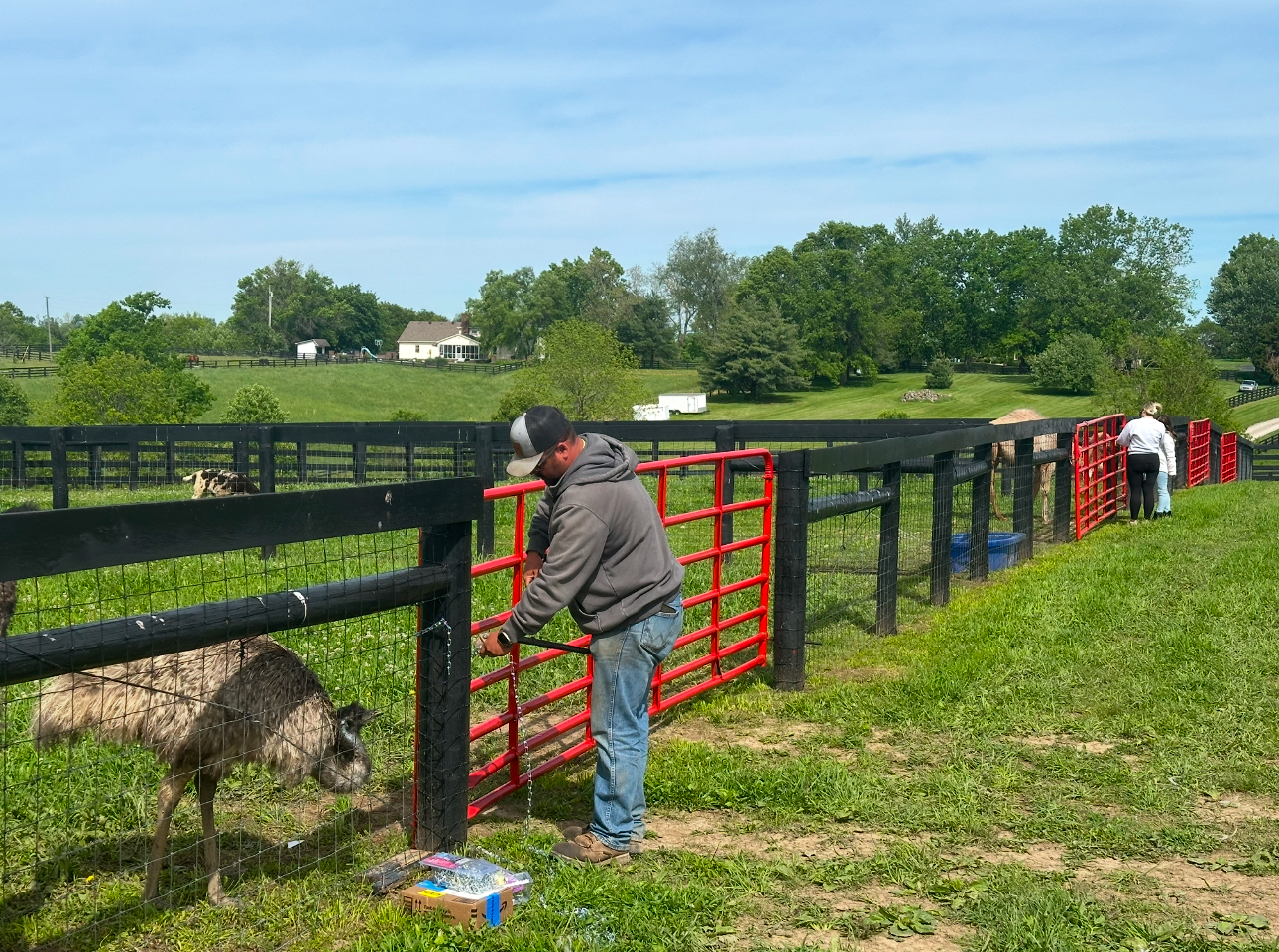Stamm: Protect pets, livestock from blue-green algae
Published 9:04 am Wednesday, August 28, 2019

- Clay Stamm is the Clark County Cooperative Extension Service agent for agriculture and natural resources.
We’ve all seen the news lately about dogs getting sick or dying after drinking from lakes and ponds.
Why is this happening, and how can you protect your pets?
Blue-green algae, also called cyanobacteria, are microscopic organisms ordinarily present in aquatic ecosystems, including lakes and ponds.
Thousands of species of blue-green algae have been identified; at least 80 are known to produce toxins that can cause illness and death in animals as well as humans.
The substantial growth of these toxin-producing algae “blooms” can cause high concentrations of toxins in the water.
In North America, anabaena, aphanizomenon, oscillatoria and microcystis are the species of blue-green algae most commonly associated with poisoning.
In Central Kentucky, blooms are most common in late summer and early fall during hot, sunny weather.
Contamination of water with excess nutrients, particularly nitrogen and phosphorus, further encourages algal growth.
Common sources of excess nutrients include fertilizer runoff from fields, lawns and gardens, and direct manure and urine contamination from livestock.
Blooms can produce a blue-green sheen on the water surface, or they can be pea-green and thick, like spilled paint.
In addition to blue and green, blooms can also be brown or white. They can form scum, slimes or mats.
It is impossible to tell if a bloom is toxic by its appearance, so consider all blooms potentially toxic.
There are some things you can do to protect your pets and livestock from blue-green algae poisoning:
— Provide plentiful clean, clear, fresh water. Keep water bowls, buckets and troughs clean.
— Never let your pets, or children, swim in, play in, or drink water that is discolored, slimy, scummy or otherwise suspicious. Assume any bloom is toxic.
— Pay attention to local health and water advisories and respect any water body closures. Water that appears clean can still contain high concentrations of toxins.
— Fence off farm ponds, creeks and other natural water sources to prevent livestock from contaminating them as well as drinking from them.
— Fence off backyard ponds and other natural water sources to keep pets from accessing them.
— Prevent fertilizer and manure from running off into water sources.
— If your pet does access suspicious water, thoroughly wash them with clean, fresh water and prevent them from licking their fur. Wash your own hands and arms after washing your pet, as exposure to blue-green algae can cause skin, eye, nose and throat irritations in humans.
— If animals become ill after exposure to a pond, lake or other natural water sources, seek immediate veterinary care — even if the water appeared clean, toxins could still be present. Be sure to tell your veterinarian if your animal might have been exposed to blue-green algae. This can help direct treatment, as many other illnesses can have similar signs.
Blue-green algae can produce neurotoxins that affect the nervous system, or hepatotoxins, which cause liver damage, and some species can produce both types.
Neurotoxins can cause muscle tremors, seizures, excessive salivation, diarrhea, difficulty breathing and death within hours or even minutes of exposure.
Hepatotoxins cause vomiting, diarrhea, bloody or dark stool and pale or jaundiced (yellow) mucous membranes.
Animals can die quickly, or they can develop liver failure over several days.
There are no antidotes for blue-green algae toxins, so early decontamination and supportive care can mean the difference between life and death for an exposed animal.
If your pet develops these or any other signs after recent exposure to water, seek immediate veterinary care.
It is important to note this includes exposure to water with no visible algal bloom.
Toxins can persist in the water for a week or longer after the bloom itself has collapsed.
For more information, contact the Clark County Cooperative Extension Service at 744-4682.
Clay Stamm is the Clark County Cooperative Extension Service Agent for Agriculture and Natural Resources.





